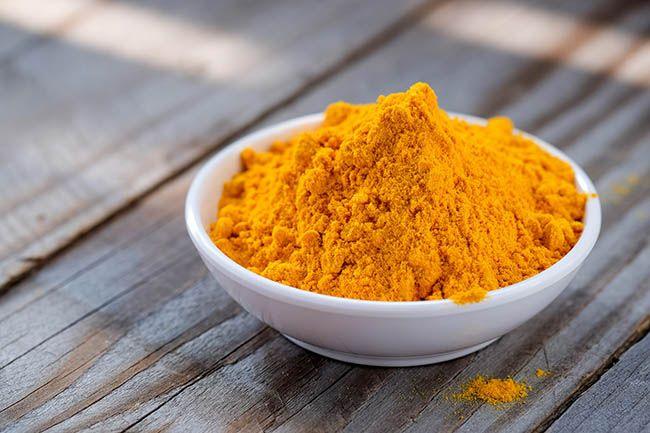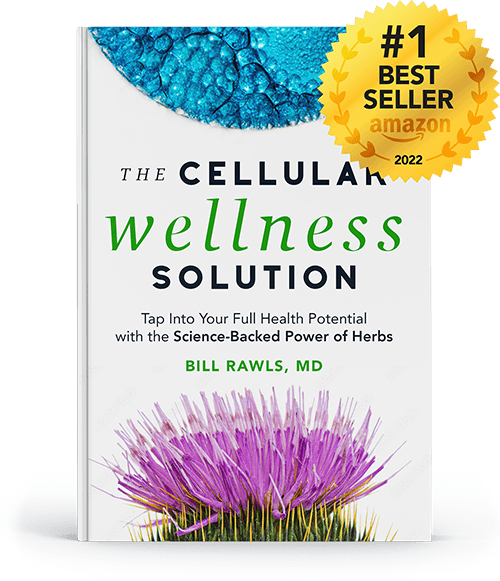Creaky knees, stiff hips, achy back. Considering how common complaints about joint pain, physical discomfort, and flexibility issues are among anyone over age 40, it’s easy to believe they’re an inevitable part of aging. And it’s true there’s some level of correlation between age and achiness.
For instance, more than 30 million Americans – many of whom have celebrated their 60th birthday – have osteoarthritis (OA), a condition where the smooth, spongy tissue in joints called cartilage has started to wear away or is fully worn. (Cartilage covers the ends of bones, and it cushions and supports joints so they stay flexible and functional.) This can cause inflammation, pain, and other problems, especially when bones end up rubbing against each other.
But you can’t solely blame your birth date or even your genetics on pain. Yes, tissue around your joints will naturally wear down with age, but external factors play a huge role in worsening or hastening the progression, says Dr. Bill Rawls, Medical Director of Vital Plan. In other words, you could be 55 years old, but choices you make could leave you with the joints (and pain) more commonly found in an 85-year-old.
Internal Vs. External Factors of Aging Joints
“Your body is continually repairing itself — you wear out cells and then replace them with new cells all the time,” Dr. Rawls explains. This is true of all cells, including those that make collagen, the fibrous tissue that makes up cartilage.
But even if you are the picture of health, the cells that make new collagen and cartilage will eventually burn out. That’s referred to as an internal factor of aging, which are things you unfortunately can’t control.
“Someone in their 20s has good, healthy cells that can continue to generate collagen and cartilage, while someone in their 80s has more dysfunctional cells that can’t make or repair cartilage as well,” Dr. Rawls says. “As you get older, you have a naturally lower capacity to rebuild the body.”
What you can control are the external factors that contribute to aging joints and back pain. These include things that accelerate the breakdown of cartilage, interfere with the body’s ability to produce new tissue or repair damaged tissue, and exacerbate the inflammation that causes and intensifies pain, Dr. Rawls says.
Here, learn how to protect joints from the most common damaging external factors, so you can maintain your freedom of mobility for many years to come.
Pay Attention to Your Diet.

Refined carbohydrates, starch, and sugar are what Dr. Rawls calls collagen crunchers. “Sugar molecules stick to proteins, causing collagen to stiffen and collapse,” he says.
They also, along with fried foods, release inflammation-triggering free radicals into your system, which can make joint pain worse. One recent animal study found that a high-sugar diet triggered more joint inflammation and a higher risk for arthritis regardless of weight (which is another risk factor for the condition), according to the findings in the journal Disease Models & Mechanisms.
By contrast, a diet rich in antioxidant-rich fruits and vegetables, fish, and healthy unsaturated fats has been shown to fight inflammation. It’s no wonder, then, that more closely following a Mediterranean diet – which is composed mainly of fruits, vegetables, legumes, olive oil, and fish, and limits dairy, carbs, and meat – is linked with lower prevalence of arthritis. Plus, among people with osteoarthritis, those who “eat like a Greek” reported less pain, better physical functioning, and a higher quality of life, according to a 2016 study in the American Journal of Clinical Nutrition.
Harness the Power of Joint-Supporting Herbs and Natural Ingredients.

Research has shown that certain herbs and natural ingredients tamp down inflammation and pain associated with joint and back pain, as well as help in other ways. Turmeric and boswellia are two of the best when it comes to fighting inflammation, Dr. Rawls says.
Indeed, one review of research in the Journal of Alternative and Complementary Medicine found that curcumin and other curcuminoids — active components in the turmeric plant — demonstrated safe and effective anti-inflammatory activity. In another review from the Cochrane Database of Systematic Reviews, people with osteoarthritis who took supplements with boswellia serrate extract rated their pain 17% lower after 90 days compared with those who took a placebo. They also reported better physical function.
Another herb that research suggests can ease joint and/or back pain is bromelain. This enzyme helps regulate inflammation so muscles recover more efficiently after exercise.
Two more important ingredients to know about: Eggshell membrane and hyaluronic acid. Eggshell membrane contains a natural matrix of beneficial nutrients and proteins like collagen, peptides, and calcium that promote joint health. It also supports healthy cartilage and connective tissue — fibrous tissue that binds other tissue and organs together for support and insulation — which is increasingly important with age.
Hyaluronic acid is a substance that’s naturally produced by the body and found in connective tissues, skin, eyes, and especially synovial fluid, the thick liquid in joints that keeps them moist for easy movement. It’s a polysaccharide or sugar, and it’s what makes synovial fluid viscous for effective lubrication and friction reduction. A number of clinical studies have shown that supplementing with hyaluronic acid can help ease joint pain, particularly in the knees, by contributing to healthy lubrication.
Fight Inflammation On Other Fronts, Too.

Stress and poor sleep can also stoke inflammatory fires in your body, as can toxins. “Toxins are collagen crunchers, too,” Dr. Rawls says. “We’re exposed to so many in our food and in the air, and they act like free radicals in the body and cause inflammation.”
So along with managing stress and making sure you get enough sleep, try to minimize your toxin exposure by filtering your water, eating organic food when you can, and in general steering clear of other environmental and household pollutants.
Mind Your Microbes.

“There’s a huge microbial component to joint pain — bigger than anyone thinks,” Dr. Rawls says. While experts used to think microbes existed only in one’s intestines and on skin, researchers have now found them in other organs and tissue, including joints.
Some microbes, such as borrelia (which causes Lyme disease) and mycoplasma (a common bacteria associated with various infections, including pneumonia, depending on the strain), are particularly problematic. They produce enzymes that break down collagen.
In fact, the vast majority of people with rheumatoid arthritis, osteoarthritis, and other chronic forms of inflammatory arthritis were found to have a strain of mycoplasma in their joint fluid in a small study in the Journal of Clinical Microbiology. In addition, for people with uncontrolled Lyme disease, pain in joints and ligaments — areas where there’s a lot of collagen — are common symptoms, likely caused by inflammation and collagen breakdown by bacteria, Dr. Rawls says.
If your immune system is working optimally, it will keep microbes in check and minimize their damage to joints, Dr. Rawls says. And one of the best ways to support your immune system is with herbs that also support a healthy microbiome, such as andrographis, cat’s claw, Japanese knotweed, sarsaparilla, and garlic, he says.
Consider CBD for Acute Pain.

CBD stands for cannabidiol, a chemical compound extracted from hemp (a strain of the cannabis plant). Your body naturally produces chemicals similar to CBD called cannabinoids, which play a role in a variety of functions such as sleep, pain, and immune response. And now, research on CBD shows promise for a variety of health complaints, including pain, occasional sleepless, and anxious mood.
Unlike THC, which is the chemical that makes marijuana (another strain of the cannabis plant) produce a “high,” CBD doesn’t alter your state of mind. Rather, it acts on the body’s endocannabinoid system through signaling and impacting how other compounds in the system work.
For example, CBD may bind to certain receptors that help control pain perception and inflammation. An animal study in the journal Pain reports that CBD helped block pain associated with osteoarthritis, reduce joint inflammation, and also worked prophylactically to protect joints against pain. CBD has also been shown to affect endorphins, the feel-good chemicals we naturally produce to suppress pain, suggests findings in the journal Neurotherapeutics.
“You can use CBD both topically and ingest it as a tincture,” Dr. Rawls says. If you do want to pursue trying CBD, look for a full-spectrum CBD oil (most people see a benefit with 15-30 mg, two to three times a day) or topical salve. Full-spectrum is especially important in salves because most have very low levels of CBD, so the bulk of the benefit is likely derived from other aspects of hemp — especially terpenes, thanks to their anti-inflammatory properties, and additional essential oils.
Lose Even a Little Bit of Extra Weight.

The heavier you are, the more stress on your joints and back. Research routinely finds that those who are overweight or obese are at a higher risk for osteoarthritis and other causes of joint pain as well as back pain. Being overweight is actually the most preventable risk factor for osteoarthritis, according to the Arthritis Foundation. What’s more, losing just 1 pound of body weight takes 4 pounds of pressure off your joints, finds a study in Arthritis & Rheumatism.
But it’s not only the physical weight and pressure that’s to blame. Being overweight is associated with higher levels of system-wide inflammation, too. Fat tissue releases inflammatory chemicals that may make inflammation and pain in joints worse. So not only will your joints feel better by lightening their load, you’ll reduce pain-triggering inflammation.
Stay Active.

The more sedentary you are, the higher your risk for stiff and achy joints and back pain. “If all you do is sit, you’re just going to waste away,” Dr. Rawls says. In fact, exercise is considered one of the best treatments for early osteoarthritis. Of course the idea of exercising when you’re already in pain can be daunting, he says, but it can reverse joint problems, protect your mobility and physical functioning, and prevent pain as you get older.
Physical activity works in several different ways:
- It manually circulates the lubricating synovial fluid around joints, which helps keep you flexible, mobile, and pain free.
- It increases blood flow, which delivers nutrients and oxygen that are essential for repairing cartilage and maintaining fluid.
- Research suggests staying active may switch on genes linked to producing and repairing cartilage.
- You’ll build and maintain muscle that supports joints and your back.
The best part is that you needn’t go hard at the gym every day to reap the benefits, especially if your joints already hurt. On the contrary, high-intensity exercise like running or interval training can really do a number on your cartilage if you’re in your 50s, 60s, or 70s and cells are aging. Instead, you can start slowly and choose low-impact exercises.
“The first step for anyone who has been sedentary can be qigong,” Dr. Rawls says. Often described as moving meditation, it combines slow, gentle movements with breathing and mindfulness. “The movements promote healing,” Dr. Rawls says.
In people with fibromyalgia, for example, those practicing qigong saw significant improvements in pain, sleep, and physical function compared to a control group, reports a study in the journal Arthritis Research & Therapy. Other studies also show benefits from qigong and tai chi for those with arthritis and back pain.
Gentle yoga and other muscle-strengthening or resistance exercises, plus walking, hiking, cycling, dancing, and water-based cardio exercises can also help and be gentle on joints, Dr. Rawls says. Just start slowly, and gradually increase the intensity or pace and distance. “You can modify the intensity and reduce the impact of your activity as need.”
Taking care of your joints is a top priority if you want to stay fit and active now and for the foreseeable future. And know that joint problems can strike at any age — particularly if you’re more active and putting yours through a lot of motion — so the best time to start giving them some love is now.
Looking for More Wellness Tips?
Join our newsletter for bi-weekly tools, education, and savings to boost your health.
References
1. Arthritis Foundation. “Arthritis by the Numbers: Book of Trusted Facts & Figures.” 2018; v2. https://www.arthritis.org/Documents/Sections/About-Arthritis/arthritis-facts-stats-figures.pdf
2. Donovan, E.L. et. al. “Independent effects of dietary fat and sucrose content on chondrocyte metabolism and osteoarthritis pathology in mice.” Disease Models & Mechanisms, 2018. http://dmm.biologists.org/content/11/9/dmm034827
3. Arthritis Foundation. “8 Food Ingredients that can Cause Inflammation.” https://www.arthritis.org/living-with-arthritis/arthritis-diet/foods-to-avoid-limit/food-ingredients-and-inflammation.php
4. Veronese, N. et. al. “Adherence to a Mediterranean diet is associated with lower prevalence of osteoarthritis: Data from the osteoarthritis initiative.” Clinical Nutrition. 2017 Dec;36(6):1609-1614. https://www.ncbi.nlm.nih.gov/pubmed/27769781
5. Veronese, N. et. al. “Adherence to the Mediterranean diet is associated with better quality of life: data from the Osteoarthritis Initiative.” American Journal of Clinical Nutrition. 2016 Nov; 104(5): 1403–1409. https://www.ncbi.nlm.nih.gov/pubmed/27680996
6. Nita Chainani-Wu. “Safety and Anti-Inflammatory Activity of Curcumin: A Component of Tumeric (Curcuma Longa).” Journal of Alternative and Complementary Medicine. 2003 Feb; 9(1): 161-8.
7. Cameron, Melainie and Chrubasik, Sigrun. “Oral Herbal Therapies for Treating Osteoarthritis.” Cochrane Database of Systematic Reviews. 2017; 5. https://www.researchgate.net/publication/237004792_Oral_herbal_therapies_for_treating_osteoarthritis
8. Ruff KJ, Theodosakis J, Morrison D, Duncan SA, Back M, and Aydogan C. (2018) “Eggshell Membrane: Beneficial
effects of natural eggshell membrane versus placebo in exercise-induced joint pain, stiffness, and cartilage turnover in
healthy, postmenopausal women.” Clinical Interventions in Aging, 13:285-295.
9. Mariko Oe, et al. “Oral hyaluronan relieves knee pain: a review.” Nutrition Journal.; 2016 Jan 27.
10. Gagnier, JJ et al. “Herbal Medicine for Low Back Pain: A Cochrane Review.” Spine. 2016 Jan;41(2):116-33. https://www.ncbi.nlm.nih.gov/pubmed/26630428
11. Buford, TW et al. “Protease supplementation improves muscle function after eccentric exercise.” Medicine and Science in Sports and Exercise. 2009 Oct;41(10):1908-14. https://www.ncbi.nlm.nih.gov/pubmed/19727022
12. Johnson, Sheena M. et al. “Distribution of Mycoplasma pneumoniae and Mycoplasma salivarium in the Synovial Fluid of Arthritis Patients.” Journal of Clinical Microbiology. 2007 Mar; 45(3): 953–957. https://www.ncbi.nlm.nih.gov/pmc/articles/PMC1829110/
13. Nieman, David C. et al. “A commercialized dietary supplement alleviates joint pain in community adults: a double-blind, placebo-controlled community trial.” Nutrition Journal. 2013; 12: 154. https://nutritionj.biomedcentral.com/articles/10.1186/1475-2891-12-154
14. Costa, Barbara et al. “Vanilloid TRPV1 receptor mediates the antihyperalgesic effect of the nonpsychoactive cannabinoid, cannabidiol, in a rat model of acute inflammation.” British Journal of Pharmacology. 2004 Sep; 143(2): 247–250. https://www.ncbi.nlm.nih.gov/pmc/articles/PMC1575333/
15. Lowin, Torsten and Straub, Rainer. “Cannabinoid-based drugs targeting CB1 and TRPV1, the sympathetic nervous system, and arthritis.” Arthritis Research & Therapy. 2015; 17(1): 226. https://www.ncbi.nlm.nih.gov/pmc/articles/PMC4561168/
16. Project CBD. “How CBD Works.” https://www.projectcbd.org/science/cannabis-pharmacology/how-cbd-works
17. Philpott, Holly T. et al. “Attenuation of early phase inflammation by cannabidiol prevents pain and nerve damage in rat osteoarthritis. Pain. 2017 Dec; 158(12): 2442–2451. https://www.ncbi.nlm.nih.gov/pubmed/28885454
18. Bliddal, H. et al. “Osteoarthritis, obesity and weight loss: evidence, hypotheses and horizons – a scoping review.” Obesity Reviews. 2014 Jul; 15(7): 578–586. https://www.ncbi.nlm.nih.gov/pmc/articles/PMC4238740/
19. Frilander, Heikki et al. “Role of overweight and obesity in low back disorders among men: a longitudinal study with a life course approach.” BMJ Open. 2005; 5 https://bmjopen.bmj.com/content/5/8/e007805
20. Knutsson, B et. al. “Body Mass Index and Risk for Clinical Lumbar Spinal Stenosis: A Cohort Study.” Spine. September 15, 2015 – Volume 40 – Issue 18 – p 1451–1456 https://journals.lww.com/spinejournal/Fulltext/2015/09150/Body_Mass_Index_and_Risk_for_Clinical_Lumbar.12.aspx
21. Juraschek, Stephen P. et al. “Body Mass Index, Obesity, and Prevalent Gout in the United States in 1988–1994 and 2007–2010.” Arthritis Care Research. 2013 Jan; 65(1): 127–132. https://www.ncbi.nlm.nih.gov/pubmed/22778033
22. Erdmann, Jeanne. “Osteoarthritis Obesity.” Arthritis Foundation. https://www.arthritis.org/living-with-arthritis/comorbidities/obesity-arthritis/osteoarthritis-and-obesity.php
23. Gentry, Teresa T. “Benefits of Weight Loss.” Arthritis Foundation. https://www.arthritis.org/living-with-arthritis/arthritis-diet/losing-weight/weight-joint-pain.php
24. Messier SP, et al. “Weight loss reduces knee-joint loads in overweight and obese older adults with knee osteoarthritis.” Arthritis & Rheumatism. 2005 Jul;52(7):2026-32. https://www.ncbi.nlm.nih.gov/pubmed/15986358
25. Golightly, Yvonne M., et al. “A Comprehensive Review of the Effectiveness of Different Exercise Programs for Patients with Osteoarthritis.” The Physician and Sportsmedicine. 2012 Nov; 40(4): 52–65. https://www.ncbi.nlm.nih.gov/pmc/articles/PMC4077018/
26. Arthritis Today Magazine. “How Exercise Helps Your Joints.” Arthritis Foundation. http://blog.arthritis.org/living-with-arthritis/exercise-benefits-for-joints/
27. Lynch, Mary, et al. “A randomized controlled trial of qigong for fibromyalgia.” Arthritis Research & Therapy. 2012; 14(4): R178. https://www.ncbi.nlm.nih.gov/pmc/articles/PMC3580572/
28. Baumgarden, Joseph, et al. “Qigong and a Tale of Two Back Complaints.” Medicines. 2018 Sep; 5(3): 60.
29. Yuqing Zhang, D.Sc1 and Joanne M. Jordan, MD, MPH2. “Epidemiology of Osteoarthritis.” Clin Geriatr Med. 2010 Aug; 26(3): 355–369. https://www.ncbi.nlm.nih.gov/pmc/articles/PMC2920533/
30. Katsuyama S1, et. al. Involvement of peripheral cannabinoid and opioid receptors in β-caryophyllene-induced antinociception. Eur J Pain. 2013 May;17(5):664-75. https://www.ncbi.nlm.nih.gov/pubmed/23138934



